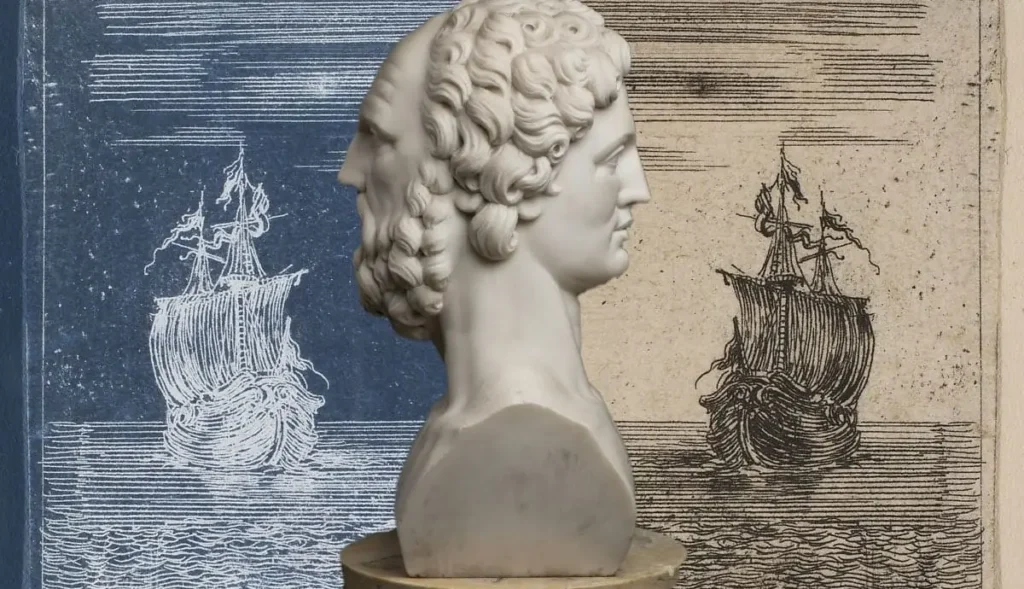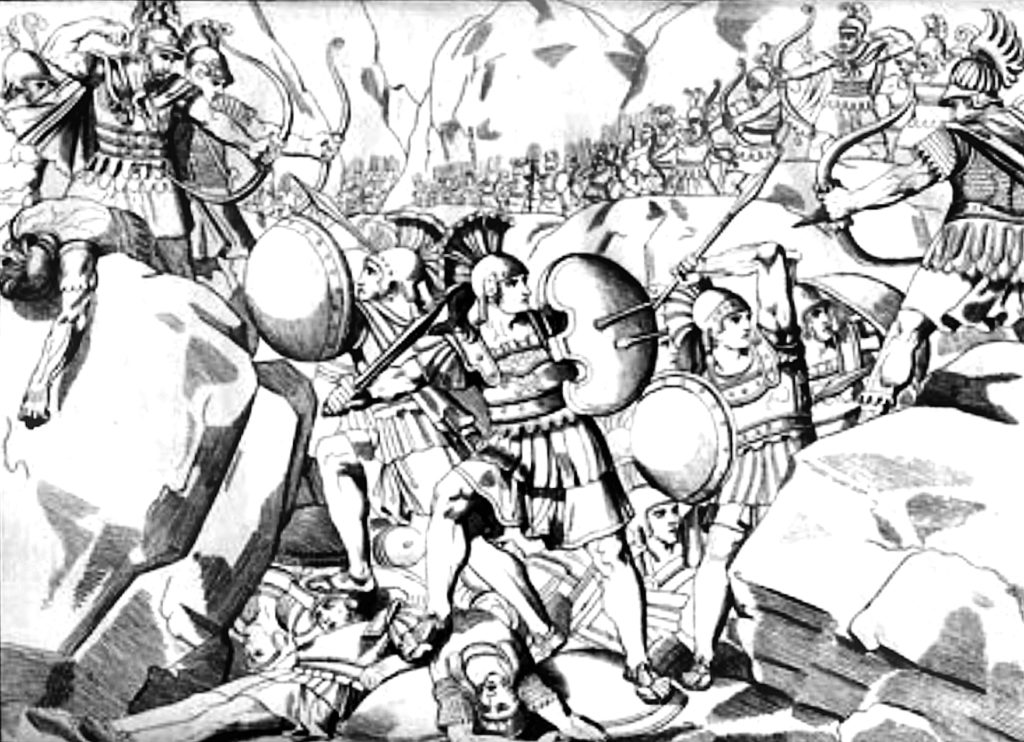If every piece of a ship is replaced over time until none of the original components remain, is it still the same ship?
The Ship of Theseus is a thought experiment rooted in the story of Theseus, the founder-king of Athens who took a certain ship on a pilgrimage each year to honor the god Apollo.
Over the centuries, Greek philosophers began to wonder: If each individual piece was replaced over the years, is it really the same ship?
This ancient philosophical question was first documented by Plutarch in the first century AD.

The Story of Theseus
Theseus was the mythical founder-king of Athens. He was the son and heir of King Aegeus, though many myths say that Theseus’s true father was Poseidon. His mother was a Greecian princess by the name of Aethra. She raised him in her father’s kingdom.
When Theseus came of age, he journeyed to Athens to claim his birthright. He traveled overland and vanquished many enemies on the way.
The six entrances to the underworld where he encountered and bested his foes are referred to as the Six Labors of Theseus. More enemies awaited him in Athens, but he outsmarted them all and was reunited with his father.
When a prince of Crete was assassinated in Athens, King Minos threatened to send his army to avenge his son’s death. King Aegeus surrendered, and Minos demanded tribute in retribution: every seven years,
Athens must send its seven most courageous young men and the seven most beautiful maidens on a ship to Crete to be devoured by the Minotaur, the man-bull monster imprisoned there in a labyrinth.
With the help of Minos’s daughter Ariadne, Theseus traveled to the center of the labyrinth and found the Minotaur. They fought, and Theseus prevailed. He rescued the young Athenians sent as tribute and stole away Minos’s two daughters.
The ship that carried Theseus through this successful mission was the Ship of Theseus referred to by Plutarch. The Athenian people had pledged to honor Apollo every year if the hero returned with those sons and daughters of Athens, and so they did.
The ship sailed to the island of Delos each year to pay tribute to Apollo.
Worn-out and rotten wood was replaced each year. This gave rise to the question of whether or not it was still the same ship that carried Theseus home from Crete.
Plutarch
Plutarch was a Greek philosopher born in the first century AD. He was also a historian, magistrate, and priest of Apollo. His famous work Parallel Lives contains the first recorded reference to the Ship of Theseus paradox.
Parallel Lives, or Lives of the Noble Greeks and Romans, is a series of 48 biographies. It is made up of 24 pairs of biographies; each one includes a famous Greek and a famous Roman. The first volume compares Theseus to Romulus, the legendary founder-king of Rome.
In Life of Theseus, Plutarch wrote:
The ship wherein Theseus and the youth of Athens returned from Crete had thirty oars, and was preserved by the Athenians down even to the time of Demetrius Phalereus, for they took away the old planks as they decayed, putting in new and stronger timber in their places, insomuch that this ship became a standing example among the philosophers, for the logical question of things that grow; one side holding that the ship remained the same, and the other contending that it was not the same.
Life of Theseus, Plutarch
This question endured for centuries and was expanded by the Englishman Thomas Hobbes.
Thomas Hobbes’ Interpretation
Thomas Hobbes was an English philosopher who was born in 1588. His book Leviathan postulated that a social contract is a necessary precursor to any civilized society.
He believed that the authority of the state over the individual was necessary to promote order, arts, and industry. Ultimately, argued Hobbes, all of that authority must rest with the nation’s sovereign.
In the 17th century, Hobbes extended the old question by exploring it from another angle: If a ship is taken apart and the material is used to build a second ship, is that still the same ship?
In his essay “Of Identity and Difference” Hobbes wrote:
For if that Ship of Theseus (concerning the Difference whereof, made by continual reparation, in taking out the old Planks, and putting in new, the sophisters of Athens were wont to dispute) were, after all the Planks were changed, the same Numerical Ship it was at the beginning; and if some Man had kept the Old Planks as they were taken out, and by putting them afterward together in the same order, had again made a Ship of them, this, without doubt, had also been the same Numerical Ship with that which was at the beginnings and so there would have been two Ships Numerically the same, which is absurd… But we must consider by what name anything is called when we inquire concerning the Identity of it… so that a Ship, which signifies Matter so figured, will be the same, as long as the Matter remains the same; but if no part of the Matter is the same, then it is Numerically another Ship; and if part of the Matter remains, and part is changed, then the Ship will be partly the same, and partly not the same.
“Of Identity and Difference,” Thomas Hobbes
He concluded that there were two kinds of identity at play here: Form and Matter.
In the original question, the ship that maintains the same shape while being composed of entirely new materials is the same ship in form but not in matter. In the latter, the ship is made of the same materials but takes a new form.
In this particular instance, Hobbes didn’t deal in absolutes. The answer, he concluded, was somewhere in between: neither ship was completely the same or completely different from the original.
His work would later be built upon by cognitive scientists who explained that the very concept of a ship (and our understanding of the world in general) is less of an objective truth and more of a human idea. The form and matter may change, but the ship stays the same.

